BPM Lifecycle | The Definitive Guide
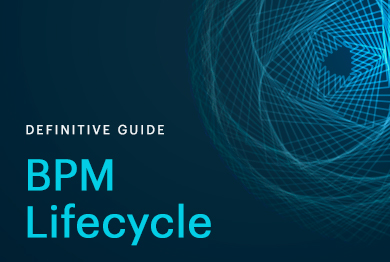
The BPM lifecycle is a method of implementing and managing business processes that has adapted over time as technology and business management methods have evolved.
However, although there are a significant number of publications on the web that provide information about the different phases involved in the process lifecycle, you may have noticed that many of them offer disparate versions. In other words, some authors decided to eliminate or add stages, while modifying the sequential order of execution.
Under this premise, this guide aims to serve as a reference tool, for both technology professionals and less technical profiles, interested in resolving any doubts or questions that may arise regarding the phases of the BPM lifecycle.
What is the BPM lifecycle?
There are many reasons for a company to implement BPM software, including increased operational efficiency, cost reduction, quality improvement and regulatory compliance. Indeed, considering the achievement of long-term goals, business process management is an indispensable practice to ensure business success. This is because it enables organizations to “respond quickly to the changing market conditions, adapting their business model, and bringing their market strategy to operational execution through appropriate business processes, people, and technologies”, as authors August-Wilhelm Scheer and Eric Brabänder point out in “The Process of Business Process Management” chapter in the Handbook on Business Process Management 2.
Thus, Business Process Management (BPM) has become an efficient and effective alternative to functional management by advocating a process-centered approach to bring about a direct improvement in the way work is performed. However, to map processes – the practice of visualizing and detailing the steps, activities and workflows involved in a specific process within an organization – and to guarantee a commitment to continuous improvement, different phases of BPM have been conceptualized as part of what is known as the BPM lifecycle. The concept values the role played by technology, in symbiosis with the human resources involved in business processes management and execution.
Having said that, we can define the BPM lifecycle or process management framework as a model that systematizes the steps and activities that must be followed to effectively implement and manage processes.
Structured approach composed of sequential stages, aimed at implementing and managing business processes.
Review of Theoretical BPM Lifecycle Models
To date, different theoretical models of the BPM lifecycle have been documented, based on the traditional conceptual framework for business process management. These have been developed by well-known consultancy firms, software vendors and the academic research community, as explained by Marek Szelągowski of the Systems Research Institute of the Polish Academy of Sciences in a publication to celebrate the 2018 Annual Conference on Computer Science and Intelligence Systems (FedCSIS).
Thus, we find proposals as disparate as those detailed in the following table, where we mention the source, the authors and the stages that make up each of the models.
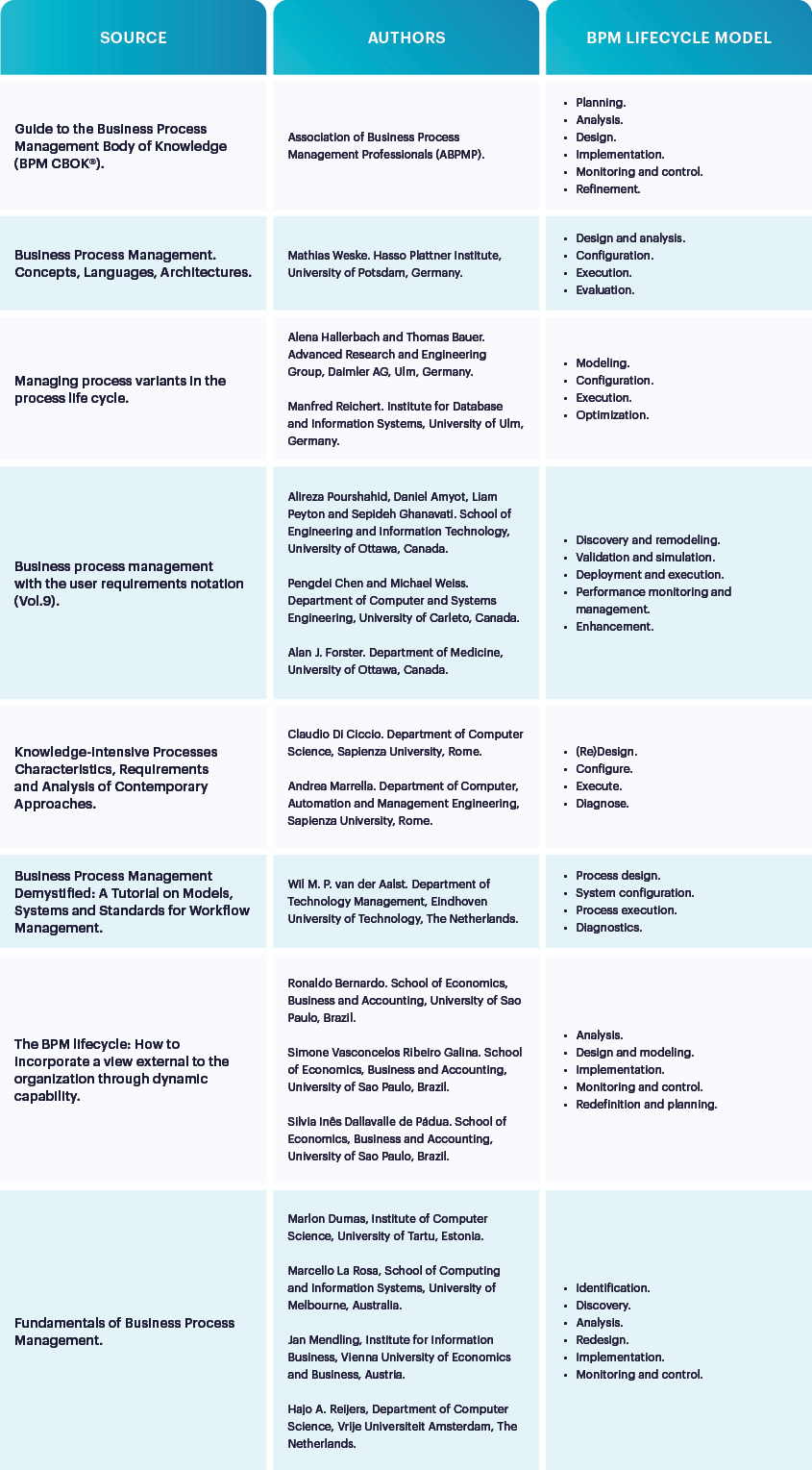
Multiple models highlight the importance of developing an up-to-date theoretical framework that consolidates all phases or stages of the BPM life cycle into a cohesive perspective. Therefore, below, we present the model that has been used in AuraQuantic for over 20 years, as an instrument and iterative focus for process management and optimization.
AuraQuantic BPM lifecycle model
AuraQuantic proposes a process management lifecycle that consists of five phases: Modelling, Simulation, Execution, Monitoring and Optimization. Next, we’ll examine the phases to comprehend their components and the activities associated with each stage.
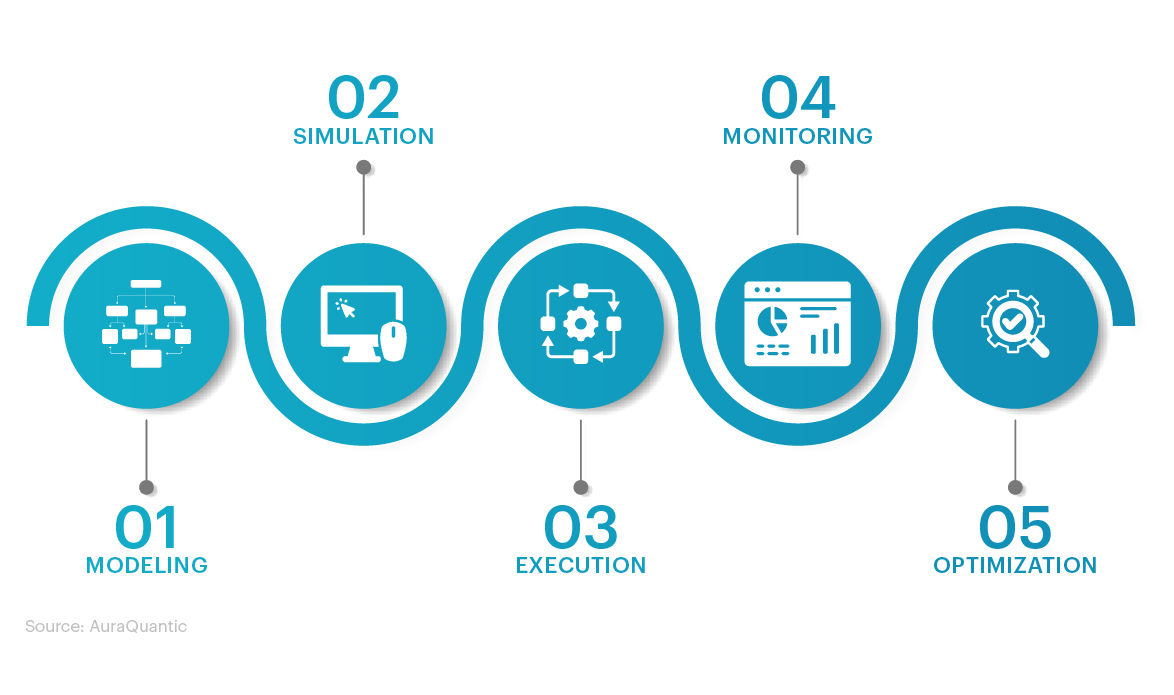
Phase 1) Modelling
Modelling is the first stage of the BPM lifecycle. It is divided into two sub-phases:
- Diagramming: It consists of designing a diagram to develop process operation. This involves the use of the Business Process Modelling Notation (BPMN), a graphic standard widely used for process modelling, i.e., to visually represent the elements and steps of a business process.
- Parameterization: Once the process has been diagrammed, it needs to be configured. This involves defining or adjusting the values or attributes that correspond to each of the objects in the diagram, providing answers to questions such as: Who executes each option? What data does it receive? What data does it provide? Does the process need to be integrated with other applications? How much time is available? What conditions must be met to direct the flow in one direction or another? What does the system report and who does it report to (automatically)…?
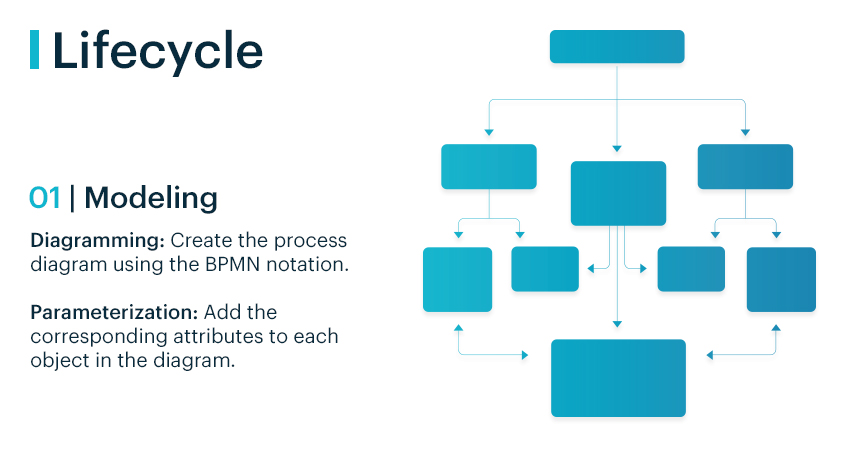
Phase 2) Simulation
In this stage, an evaluation of the functioning of the modelled process is carried out, to check how it works before implementing it in the real environment. This simulation can be carried out in two ways:
- Statistical simulation: This type of simulation is used to create hypothetical scenarios by introducing probabilistic data into the system. Employing this technique permits the assessment and measurement of results across an indeterminate number of processes.
- Real simulation: This type of simulation is used to know or verify the real results of the processes during their execution. The degree of reliability of this type of simulation is greater than statistical simulation since it offers a detailed and precise representation of what will happen with the processes in reality.
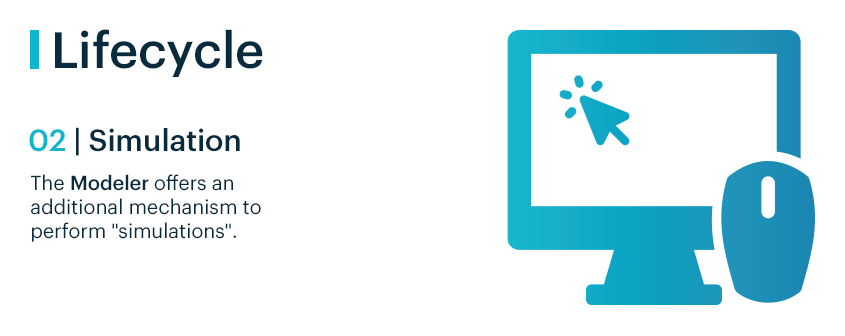
Phase 3) Execution
Once the simulation results have been evaluated, and the absence of errors has been confirmed, the next stage in the BPM lifecycle is execution. The use of a Business Process Management Suite (BPMS) that integrates no-code technology among its functionalities is key for the management of all stages of the BPM lifecycle, especially during process implementation and improvement. The main reason is that this technology eliminates the need to write programming code; the process simply needs to be published to activate it, just like a website. Once published, and depending on the nature of the process, it will be available to different types of users. In other words, a process created to manage vacation requests will only be accessible to an organization’s staff, while another related to the purchase of a product or service will be available to customers or external parties.
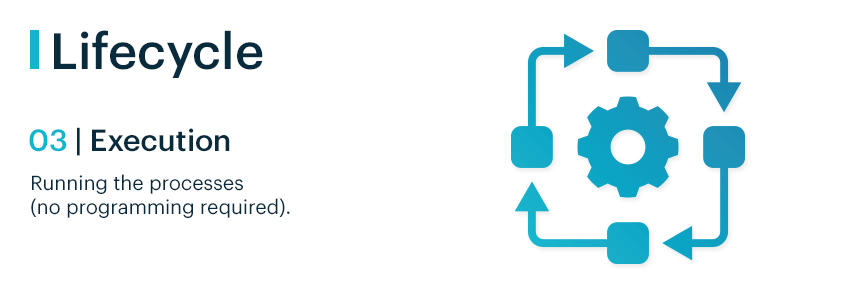
Phase 4) Monitoring
Once the process is running, data is generated to continuously monitor and evaluate its performance, to ensure that strategic objectives are being met and to improve operational efficiency. In this phase, key performance indicators (KPIs) are identified and established to measure process performance; alerts and notifications are generated to report deviations or critical events – situations or conditions considered of great importance or severity within the system; trends and patterns are analyzed, and periodic reports are generated to promote transparency and alignment with the defined objectives. Failure to monitor and optimize a process leads to its deterioration. Therefore, it is necessary to adapt and continuously improve it by considering changes in customer needs, competition, and technology. Furthermore, it is essential to consider the phases in the BPM lifecycle cyclically, as the results obtained during monitoring feed back into the other stages.
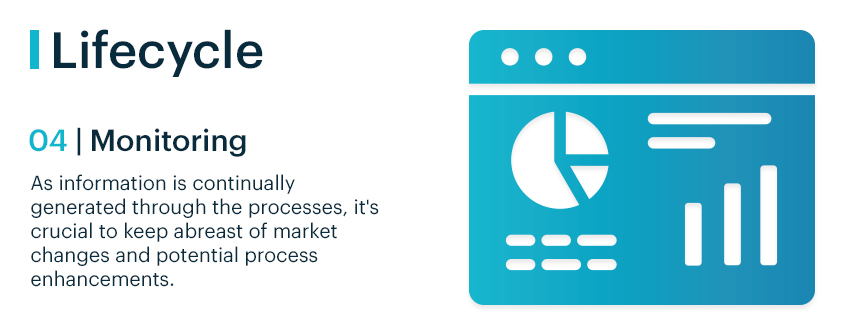
Phase 5) Optimization
Continuous improvement is a fundamental principle in business process management. At this point in the cycle, modifications will be made in line with the aspects for improvement detected in the previous stage. The speed and ease at which modifications can be made depends on the type of software used.
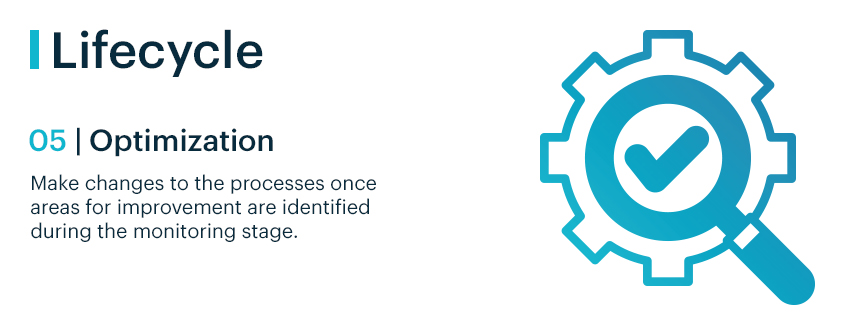
Closing reflections
Ultimately, all organizations have processes. Understanding and managing these processes properly to ensure that they consistently deliver value is essential for organizations to remain effective and competitive.
Technology is an indispensable tool to improve business processes. Furthermore, the stakeholders involved in BPM initiatives are a determining factor in their design, implementation and optimization. In this case, we refer to interdisciplinary teams made up of profiles that include managers, process administrators and analysts, system engineers, process participants and the BPM group – known as a BPM Centre of Excellence. This group drives a process management culture and ensures that the initiatives support strategic objectives. However, the level of involvement of all these stakeholders will differ depending on the type of Business Process Management Suite used or the custom-built design.
On the one hand, the IT department can be assigned to build a customized technological solution to automate a specific part of a process or use a BPM suite that requires coding. In addition to delaying the BPM initiative, this will increase the workload for the more technical profiles that will have to design and improve processes using programming code. Furthermore, participation from non-technical profiles will be limited throughout the different phases of the BPM lifecycle.
On the other hand, organizations that opt for a Business Process Management Suite that offers no-code technology in its catalogue of functionalities will see reduced costs, increased development speed, elimination of coding-related errors, increased accessibility and collaboration, and increased flexibility when making changes or updates to the system. Thus, systems engineers, in collaboration with process analysts, will focus their attention on understanding the key issues impacting a specific process and seek more effective ways to address them. In turn, profiles related to other business areas (HR, Finance, Marketing, Sales, Operations, Product Development, Legal, etc.) should understand how technology can be used to optimize business process execution. HR, Finance, Marketing, Sales, Operations, Product Development, Legal, etc.) will need to understand how technology can be used to optimize business processes. In short, this approach involves working together to achieve business excellence through BPM management.



